Math Revision
1/36
Earn XP
Description and Tags
Name | Mastery | Learn | Test | Matching | Spaced |
|---|
No study sessions yet.
37 Terms
point-slope form
(y -y) = m(x - x)
Vertex formula
x = -b/2a
completed square form
y = a(x - h)2 + k, where vertex = (h,k)
factorized form
a(x - p)(x - q) = y, where p and q are x-intercepts
the axis of symmetry is x = (p + q)/2
completing the square
when y = bx + c
completed square: y = (x + b/2)2 - (b/2)2 + c
cutting
2 points of intersection, if the line touches the curve at least once, it is a tangent to the curve
touching
1 point of intersection, if the line touches the curve at least once, it is a tangent to the curve
missing
0 points of intersection
natural domain of f(x) = x2
x ∈ R
natural domain of f(x) = √x
x ≥ 0
natural domain of f(x) = 1/x
x ≠ 0
natural domain of f(x) = 1/√x
x > 0
many to one function
there are multiple inputs to the same output (e.g. parabola), does not pass horizontal line test
inverse is not a function
one to one function
every x goes to a unique y (e.g. straight line), passes horizontal line test.
inverse is a function
graph of f(x) = x3
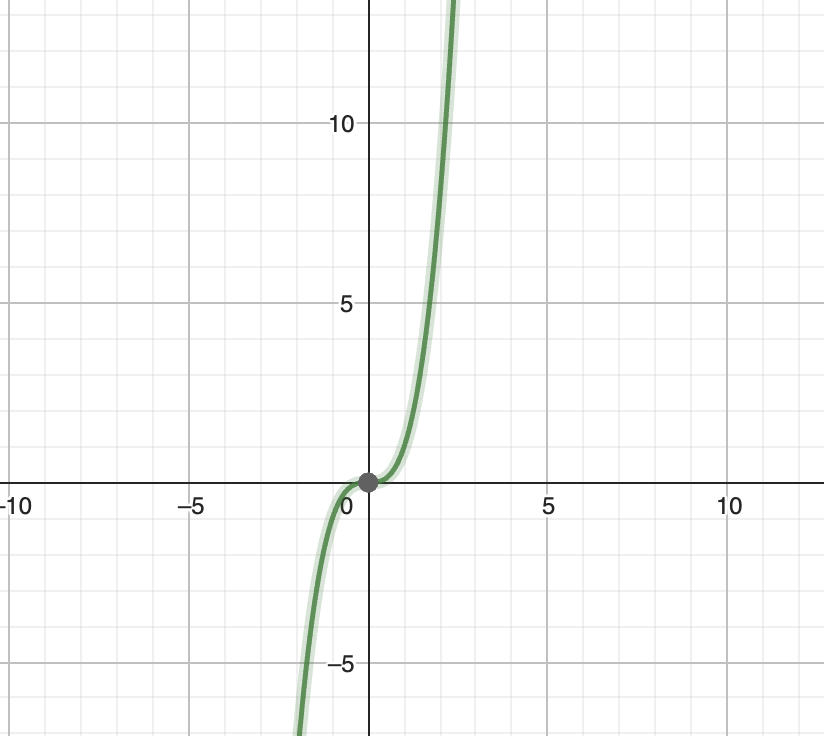
graph of f(x) = -x3
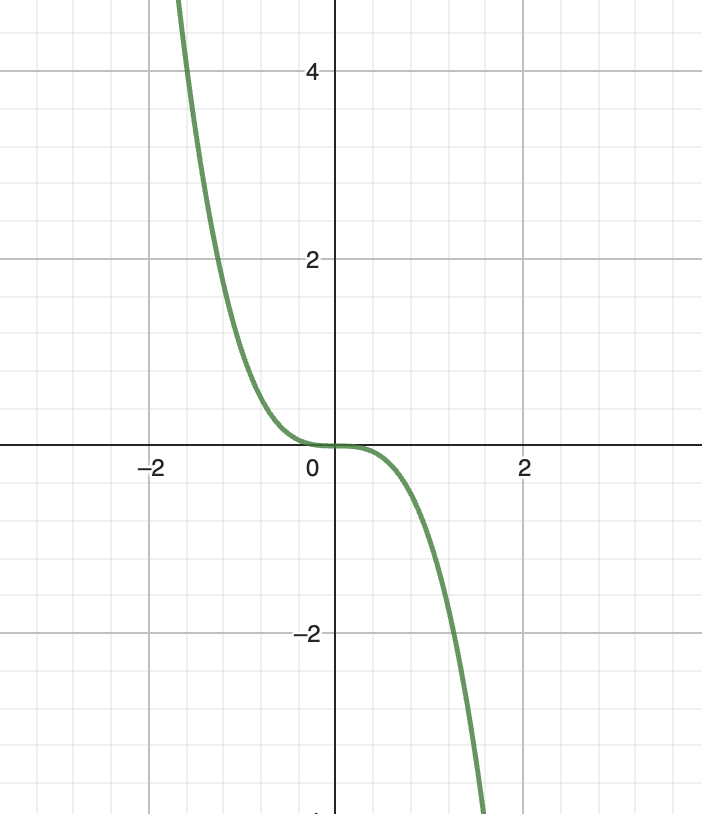
graph of f(x) = x3 + anything
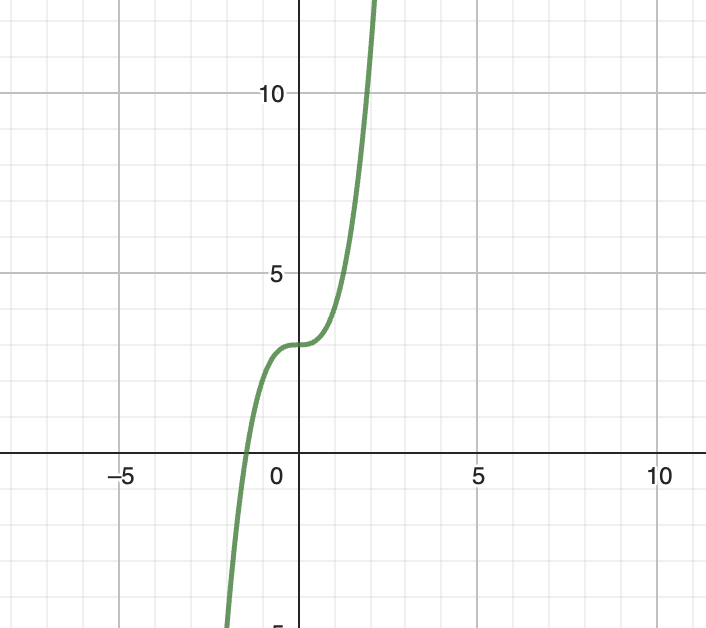
graph of f(x) = -x3 + anything
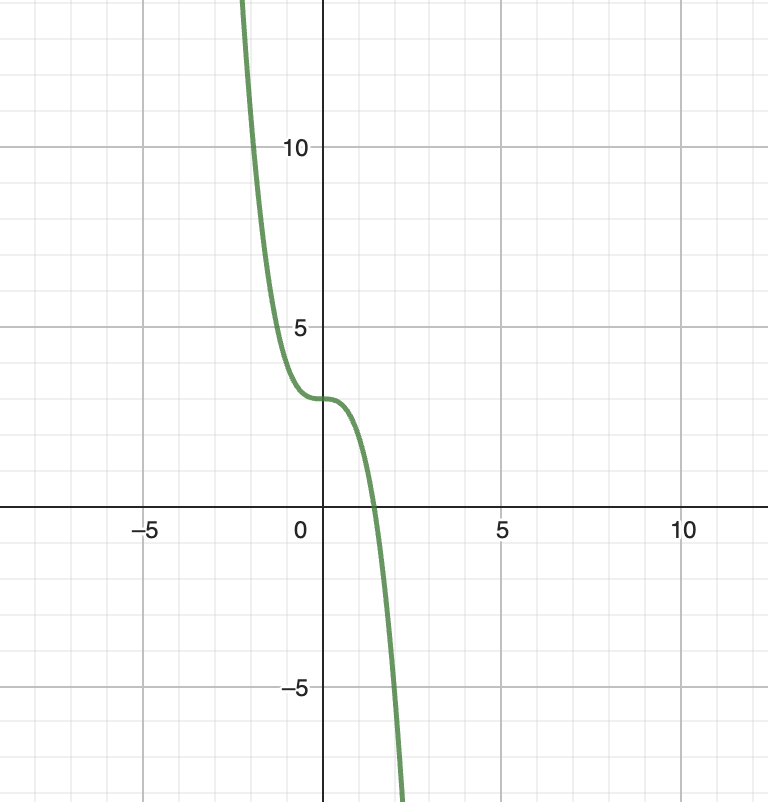

reciprocal function
a function of the form y = k/x, where k ≠ 0
graph is a rectangular hyperbola which has…
2 branches
a horizontal and vertical asymptote
the coordinates of points on the asymptotes are (1,k), (k,1), and (-k,-1), (-1,-k)
if you increase k, the curve becomes flatter as the graph moves further from the origin
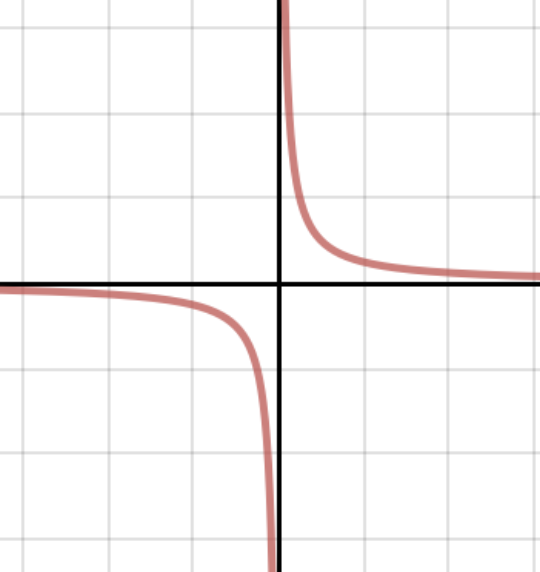
asymptotes for function in form y = b/(cx + d) + a, where b & c ≠ 0
vertical asymptote: x = -d/c
horizontal asymptote: y = a
asymptotes for function in form y = (ax + b)/(cx + d), where c ≠ 0
vertical asymptote: -d/c
horizontal asymptote: a/c
if y = undefined for the domain in f-1(x)…
y = ∞
to solve 3x = 10…
find the intersection between f1(x) = 3x and f2(x) = 10. The x-coordinate is the answer.
Characteristics of exponent graphs…
Go through (0,1)
On either side of (0,1) the biggest/smallest values switch
If the exponent is negative (e.g. 2-x) the graph is a reflection
Exponent graph formula
y = pax-h + k
k controls vertical movement (+ve = up)
h controls horizontal movement (+ve = left)
a controls how steeply the graph ascends
if p > 0, the function is increasing (reverse is true)
Area of a trapezoid
A = (a + b) / 2 x h
Area of a sector
A = θ/2 x r2
where θ is in radians
Ambiguous case
2 angles that add up to 180 have the same sin value
CAST diagram
Cos ratios positive
All ratios positive
Sin ratios positive
Tan ratios positive
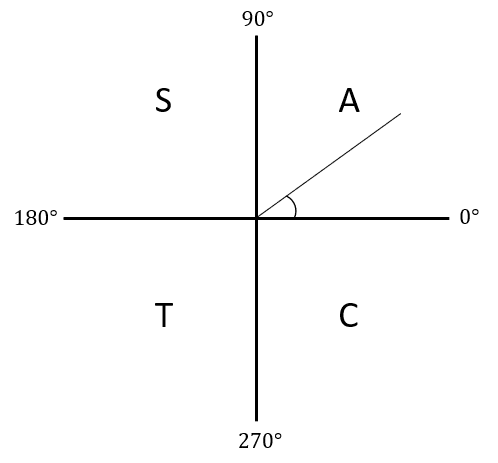
Hand trick
sin(angle) = √(number of fingers remaining)/2
sin = fingers on the left
cos = fingers on the right
Translation down by 1 unit
f(x) - 1 = x + 4
Translation left by 1 unit
f(x + 1) = x + 4
Reflection in the x-axis
y = -f(x)
Reflection in the y-axis
y = f(-x)
Enlargement in the x-direction
y = f(ax), enlargement b scale factor a
Enlargement in the y-direction
y = af(x), enlargement by scale factor a